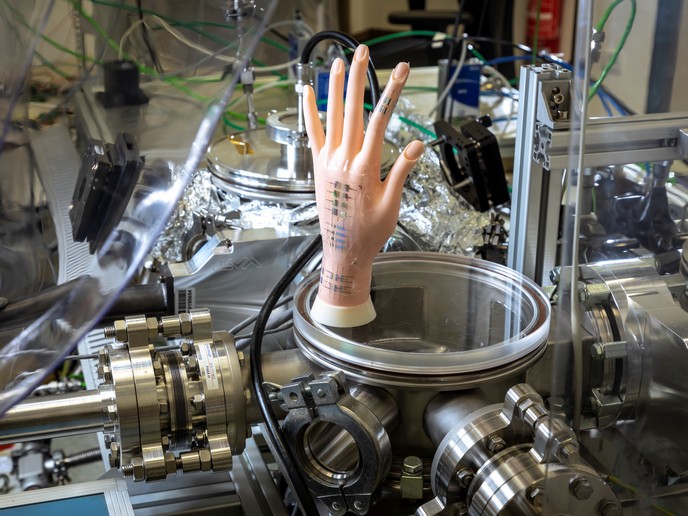Smart skin with precise sensing properties
The human skin possesses a sophisticated and specialised sensory system that identifies environmental stimuli and transmits this information to the brain. Natural skin has several types of sensory receptors and nerve endings that allow it to sense temperature and mechanical stimuli. The skin is also capable of tactile sensation, the ability to sense textures, shapes, and other physical characteristics of objects that come into contact with it. Collectively, skin provides the body with a rich array of sensory information, allowing us to experience and interact with the world around us in complex ways. While significant progress has been made in understanding this complex system in the last decade, the development of artificial skin with similar properties and functions to those of human skin is a relatively new field with enormous potential. An ideal artificial skin should have several properties that mimic those of natural human skin as closely as possible, including biocompatibility, mechanical properties and sensory perception.
Integrating different sensors in a novel artificial skin
The aim of the EU-funded SmartCore(opens in new window) project was to combine temperature, humidity and pressure sensing into a single novel artificial skin and achieve sensing with high spatial resolution. “In order to create an effective artificial skin, it is necessary to use materials that have the right mechanical and electrical properties and to control the thickness and size of the layers at a microscale level through various techniques,” explains the principal investigator Anna Maria Coclite. Researchers developed a hybrid material made of piezoelectric(opens in new window) zinc oxide and a smart polymer. A piezoelectric material is a material that produces an electric signal when it changes shape and can thus be used in pressure/force sensors such as those incorporated in touch screens. The smart polymer was designed to respond to temperature and humidity and change shape. Both materials were placed in a core shell nanostructure(opens in new window) with the smart polymer at the core and the piezoelectric on the outside. This ensured that when the former changes shape due to temperature or humidity, it puts pressure on the zinc oxide, which creates a signal that can be measured.
Biocompatible materials and increased resolution
“The SmartCore artificial skin is made from materials that are safe for the body and it can sense multiple things at once with high accuracy,” emphasises Coclite. The human skin can sense objects that have a minimum size of 1 mm2. The SmartCore artificial skin demonstrated that the response can be measured from areas as small as 0.25 mm2. Importantly, the SmartCore artificial skin showed, for the first time, sensitivity to three stimuli simultaneously (pressure, temperature and humidity). This provides integrated information about the environment, similar to the human skin.
Drug delivery from artificial skin
By creating a wireless system next, it will be possible to detect the electrical signals coming from the array of core-shell sensors and develop a real prototype device to be proposed for exploitation. Another very important aspect for artificial skins is drug delivery with controllable kinetics. In the case of SmartCore, drugs can be embedded in the smart polymers and released when the polymers expand due to temperature and humidity. This would lead to drug delivery on demand from the body, for example, in response to fever or infection processes.







